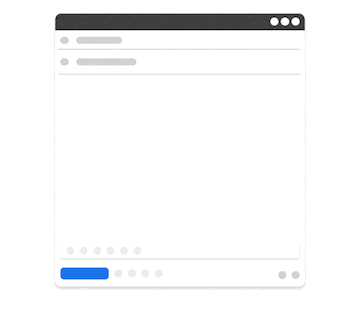Post-Mortem Meeting Template: The Ultimate Guide to Post-Mortem Meetings
Everything you need to know about post-mortem meetings plus a template you can use today.
| Tool | Description | Price |
|---|---|---|
| AI Blaze | Free personal AI homework and math assistant that works on any website. | 100% free for students. |
| MathGPT | An AI homework tool that helps with math, accounting, physics, and chemistry. | If you want unlimited math solutions, you will need to upgrade to MathGPT Unlimited, which is $9.99/month (or $24.99 every 3 months). |
| Mathos | Upload images and generate solutions to math problems with AI. | Mathos AI offers a free plan but has limitations. The Basic Plan is $4.99/week and the Prime plan is $9.99/week. |
| GauthMath | Upload a file and generate an answer to any type of math problem with AI. | Offers a free plan and a paid plan with more features for $11.99/month. |
| Solvely AI | AI homework, writing, and quiz generation. | Has a limited starter plan and unlimited plan for $12.99/month. |
If your team just finished up a big project, you need to consider holding a post-mortem meeting.
Adobe describes a post-mortem meeting as a meeting that is held at the end of a project in order to determine waht went well and what can be improved.
Attendees of the post-mortem meeting should leave with a clear understanding of what went wrong and how to prevent it from happening again.
In this article, we'll cover what a post-mortem meeting is, why it's important, how you can prepare and host one, as well as provide a template you can use today.
What is a Post-Mortem Meeting
A post-mortem meeting is an essential step in the workflow process. It's a time to review your work, identify any lessons learned, and make recommendations to ensure future tasks are completed successfully.
As a leader or manager, these meetings are essential for solidifying relationships with colleagues as you develop collective understanding and brainstorm solutions to prevent similar mistakes from happening again.
Post-mortem meetings can also be used as an opportunity for teams to evaluate their performance and celebrate successes.
At the end of the meeting, it's essential to review any action items discussed and assign them to specific members for follow-up.
The goal is to create a plan that both team members and the organization can use to ensure similar mistakes aren't repeated.
Why are Post-Mortem Meetings Important?
Post-mortem meetings are essential to team collaboration, success, and growth. They can help provide closure to a significant project or task and allow for group reflection and learning opportunities.
These meetings can result in helpful insights that individual participants may not have identified, which can be invaluable to the collective organization.
With a post-mortem meeting, the team can review a project or task, ensuring that all appropriate steps are taken and that no detail is overlooked.
This thoughtful analysis helps create opportunities for improvement, strengthen team culture, and build trust among team members.
How to Prepare For a Post-Mortem Meeting
Preparing for a post-mortem meeting is essential for maximizing the value of the information gleaned from the discussion.
Before sending your invitation, be sure you have researched and identified key topics to discuss at the meeting.
Have an agenda prepared that covers both successes and potential areas of improvement. In addition, identify specific roles or team members to invite who might provide valuable insight and advice.
Finally, ensure that you have a budget and adequate resources if any action items arise from the meeting results. Doing your homework ahead of time can ensure your post-mortem meeting is a success.
What Should a Post-Mortem Meeting Agenda Look Like?
The agenda for a post-mortem meeting should cover successes and potential improvement areas from the project. It should also identify specific roles or team members to invite who might provide valuable insight and advice.
Let's take a look at an example agenda:
- Introduction and Overview: provide a brief overview of the project and goals.
- Presentation of Results: review the project's successes, developmental areas, and overall results.
- Action Items: discuss potential solutions to any identified areas of improvement or necessary changes that need to be made.
- Summary/Conclusion: summarize the meeting, and discuss the next steps and any outstanding issues.
- Q&A: open up for questions from team members and address any concerns or feedback.
How to Conduct Analysis After a Post-Mortem Meeting
Once the meeting has concluded, it's essential to take some time to analyze the results and information gathered.
This will help you understand what went well and what could be improved and identify potential areas of concern.
Try to answer the following questions:
- What worked well?
- What didn't work well?
- What could be improved in the future?
- What changes need to be made?
- Are any areas of concern requiring further investigation or action?
By taking the time to answer these questions, you can ensure that you have identified any issues and will be able to make the necessary changes to improve processes and performance.
How to Quickly Create a Post-Mortem Meeting Agenda
Text Blaze makes communicating with your team simple and efficient.

Using Text Blaze's keyboard shortcuts, you can create templates that you can use anywhere online.
Whether you're sending common work emails or managing your business, Text Blaze helps you eliminate repetitive typing forever!
What makes Text Blaze great?
- Quickly insert entire emails using just a few keystrokes.
- Collaborate with your team with simple yet efficient sharing.
- Forms, placeholders, that can help you insert content in real-time.
- Compatability with Data Blaze to help you manage your data from anywhere.
Creating a post-mortem meeting agenda can be time-consuming. That's why we created the template below.
Post-Mortem Meeting Template
To help you get started, here is a basic post-mortem meeting template you can use for your next project:
| Heading | Contents |
| Project Overview | Provide a brief overview of the project and its goals, outlining any challenges encountered during the process. |
| Performance Review | Analyze how the project performed against its objectives, including measuring any metrics set and summarizing any issues that arose. |
| Root Cause Analysis | Investigate the root cause of any issues or problems encountered during the project, and discuss potential solutions to prevent them from happening again in future projects. |
| Lessons Learned | Identify critical lessons learned throughout the project, including what went well and what could have been done differently. |
| Recommendations | Offer any recommendations for improvement or changes to ensure success in future projects. |
| Closing Summary | Provide a summary of the project and its results, including any key takeaways that can be applied to other projects. |
| Acknowledgments | Give credit to the team members, stakeholders, or others who contributed to the project's success. |
| Appendix | Include any relevant supplementary information such as charts, graphs, or images that help to explain the project. |
Here's another template that you can use to take notes with during a post-mortem meeting.
| Team Member | Notes |
| John | Improve sales pitch |
| Catelyn | Work on email draft |
| Robb | Finalize call to action |
| Nedd | Complete deliverables |
Here's a template you can customize and send to your team to invite them to a post-mortem meeting.
This email is an invitation to a meeting following the completion of {formtext: name=projectname; default=our project}.
It will take place on {time: dddd, MM-DD; shift=+1D >MON}.
Please bring any questions as well as an open mind to the meeting where we will discuss {=projectname}, what went well, and how we can improve.
Looking forward to seeing you all on {time: dddd; shift=+1D >MON}.
Best,
Conclusion
A post-mortem meeting is an important part of your team's learning and development. Utilizing them can help you imrpove project quality and boost productivity.
Using Text Blaze, you can make the process of hosting a post-mortem meeting simple and headache-free. Quickly send meeting invitations, take notes, and get the meeting done quickly using Text Blaze's templates.




